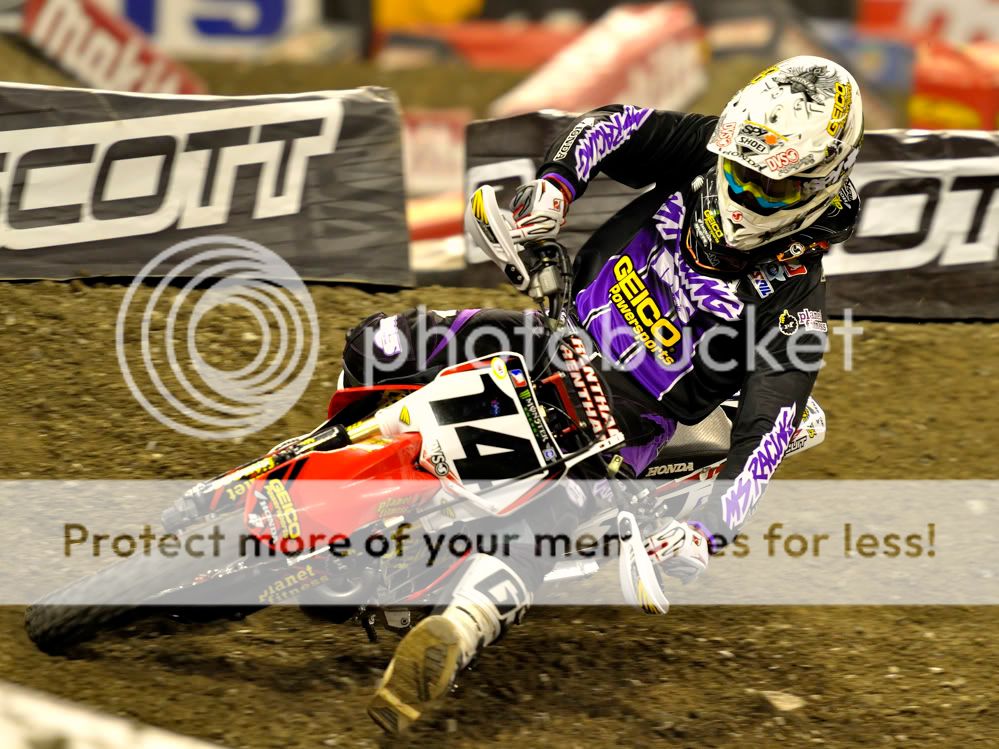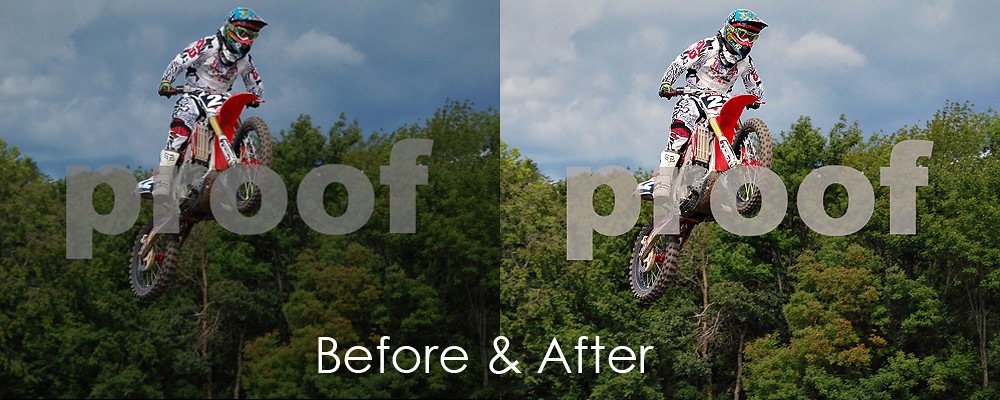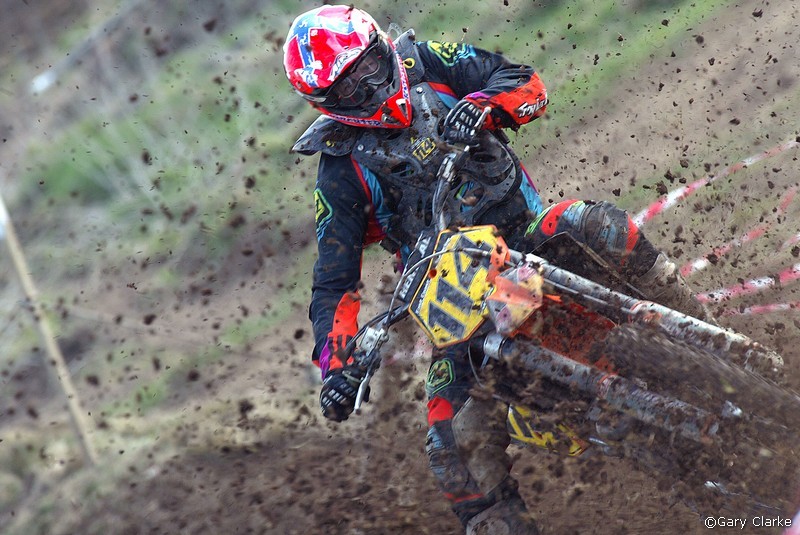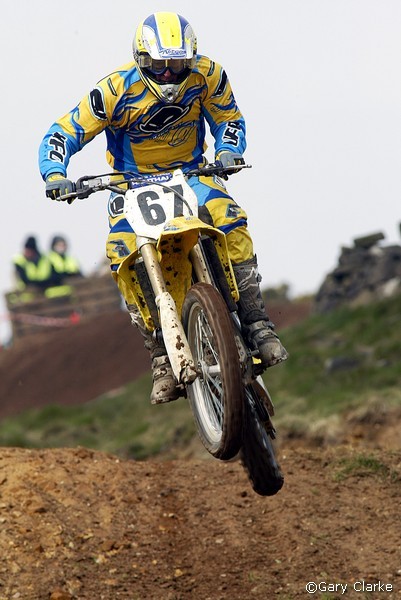I'm no expert but I've been working on photographing motocross. Some observations about your motocross rider photo and things I have learnt:
a) your shutter speed appears too high. 1/250 will freeze the rider but not the wheels and give more impression of motion.
b) the bike is too close to the tree/sky horizon and doesn't stand out enough.
c) the angle is un-interesting. Try to get more of the rider and less of the bike.
d) If you are wanting to give the impression of the height the rider is jumping, a less tight crop can work better as the background can give a measure of scale of the height to the viewer. In the first photo below, the rider is not that far off the ground, but from the camera viewpoint his head is aligned with the third tier of the stadium so it gives the impression of more height.
e) assuming you've got your composition close to right, it's easy to make a mild crop to get the subject right with regards to the ROT.
Also another technique with motorsports to isolate the subject is to try panning. This will get a nicely blurred background regardless of the actual depth of field.
Here are a couple of taken with my D5000 and 70-200 lens:













![[No title]](/data/xfmg/thumbnail/37/37603-739c5d9b541a083a12f2f30e45ca2b7b.jpg?1734170731)

![[No title]](/data/xfmg/thumbnail/37/37606-3c9ffb5906173fa2aa489341967e1468.jpg?1734170733)
![[No title]](/data/xfmg/thumbnail/36/36300-760519cb9a8ebbfc57cc3d1fda5dd37c.jpg?1734168623)

![[No title]](/data/xfmg/thumbnail/36/36301-27972c0474532c2ef657014362950733.jpg?1734168626)

![[No title]](/data/xfmg/thumbnail/37/37602-1ef8dbb1c2d0e4ff347ee65d328c3603.jpg?1734170730)
![[No title]](/data/xfmg/thumbnail/37/37605-90c8efaef5b7d1f52d4bf8e7dfd33673.jpg?1734170732)
![[No title]](/data/xfmg/thumbnail/36/36303-10b1a386a9a00cf90fb7605d2d2c48c1.jpg?1734168634)